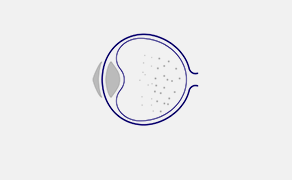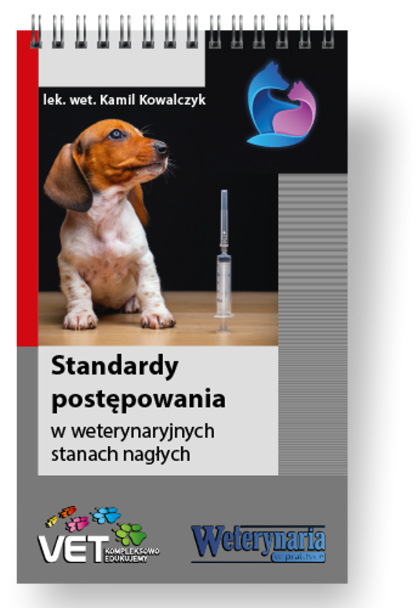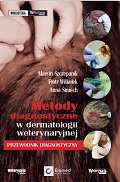Zastosowanie biomarkerów sercowych w medycynie weterynaryjnej
Piśmiennictwo
- Van Der Vekens N., Decloedt A., De Clercq D., Verheyen T., & van Loon G.: The use of cardiac biomarkers in veterinary medicine: the equine perspective. „Vlaams Diergeneeskundig Tijdschrift”, 2012, 81(6):319-327.
- Filatov V.L., Katrukha A.G., Bulargina T.V., Gusev N.B.: Troponin: structure, properties, and mechanism of functioning. „Biochemistry” (Mosc), 1999, 64(9):969-85.
- Böhm M., Voors A., Ketelslegers J.M.: Biomarkers: optimizing treatment guidance in heart failure. „Clin. Res. Cardiol.”, 2011, 100:973-981.
- Linklater A.K.J., Lichtenberger M.K., Thamm D.H.: Serum concentration of cardiac troponin I and cardiac troponin I in dogs with class IV congestive heart failure due to mitral valve disease. „J. Vet. Emerg. Critical Care”, 2007, 71:243-249.
- Oyama M.A., Sisson D.D.: Cardiac troponin-I concentration in dogs with cardiac disease. „J. Vet. Intern. Med.”, 2004, 18:831-839.
- Connolly D.J., Cannata J., Boswood A., Archer J., Groves E.A., Neiger R.: Cardiac troponin I in cats with hypertrophic cardiomyopathy. „J. Feline. Med. Surg.”, 2003 Aug; 5(4):209-16.
- Levin E.R., Gardner M.D., Samson W.K.: Natriuretic peptides. „New England J. Med.”, 1998, 30:321-328.
- Ghosh N., Haddad H.: Atrial natriuretic peptides in heart failure: pathophysiological significance, diagnostic and prognostic value. „Can. J. Physiol. Pharmacol.”, 2011, 89:587-591.
- Asano K., Masuda K., Okumura M., Kadosawa T., Fujinaga T.: Plasma atrial and brain natriuretic peptide levels in dogs with congestive heart failure. „J. Vet. Med. Sci.”, 1999, 61:523-529.
- Sjostrand K., Wess G., Ljungvall I.: Breed differences in natriuretic peptides in healthy dogs. „J. Vet. Intern. Med”, 2014, 28:451-457.
- Müller E.: Diagnostyka laboratoryjna w chorobach serca. „Weterynaria w Praktyce”, 2006, 6, 77-79.
- Oyama M., Reynolds C.: Biomarkery w diagnozowaniu chorób serca u psów. „Veterinary Focus”, 2008, 18, 2-6.
- Pasławska U., Noszczyk-Nowak A., Nicpoń J.: Wpływ mózgowego peptydu natriuretycznego na układ sercowo-naczyniowy i jego rola w diagnostyce duszności u psów i ludzi. „Medycyna Wet.”, 2005, 61, 369-372.
- Haßdenteufel E., Kresken J.G., Henrich E., Hildebrandt N., Schneider C., Stosic A., Schneider M.: NT-proBNP as a diagnostic marker in dogs with dyspnea and in asymptomatic dogs with heart murmur. „Tierarztl Prax Ausg K Kleintiere Heimtiere”, 2012, 40(3):171-9. German.
- Greco D.S., Biller B., Van Liew C.H.: Measurement of plasma atrial natriuretic peptide as an indicator of prognosis in dogs with cardiac disease. „The Canadian Veterinary Journal.”, 2003, 44(4):293-297.
- Kanno N., Hori Y., Hidaka Y.: Plasma atrial natriuretic peptide and N-terminal pro B-type natriuretic peptide concentrations in dogs with right-sided congestive heart failure. „The Journal of Veterinary Medical Science”, 2016, 78(4):535-542.
- Fox P.R., Oyama M.A., Hezzell M.J.: Relationship of Plasma N-terminal Pro-brain Natriuretic Peptide Concentrations to Heart Failure Classification and Cause of Respiratory Distress in Dogs Using a 2nd Generation ELISA Assay. „Journal of Veterinary Internal Medicine”, 2015, 29(1):171-179.
- Hulanicka M., Garncarz M., Parzeniecka-Jaworska M., Jank M.: Plasma miRNAs as potential biomarkers of chronic degenerative valvular disease in Dachshunds. „BMC Veterinary Research”, 2014, 10 -205.
lek. wet. Igor Maksymovych
Katedra Chorób Wewnętrznych i Diagnostyki Klinicznej
Wydział Medycyny Weterynaryjnej
Lwowski Narodowy Uniwersytet Medycyny Weterynaryjnej i Biotechnologii, Lwów
Mogą zainteresować Cię również
Znajdź swoją kategorię
2609 praktycznych artykułów - 324 ekspertów - 22 kategorii tematycznych
Weterynaria w Terenie

Ogólnopolski Dzień Koni
Koń od setek lat zajmował stałe miejsce w polskim krajobrazie, w polskim życiu, i w polskiej symbolice narodowej. Stanowił również symbol bogactwa, bowiem nie każdego było na niego stać. Zwierzęta te przez długi czas były popularnymi zwierzętami pociągowymi, pełniły też funkcje transportowe czy pracowały w gospodarstwach. Rozwój techniki zmienił jednak nieco rolę koni, we współczesnym […]

Podkliniczny niedobór wapnia i jego wpływ na wyniki rutynowych badań laboratoryjnych w różnych okresach laktacji u krów mlecznych
Rozpoznawanie choroby Wywiad W rozpoznawaniu pleuropneumonii duże znaczenie ma wywiad epizootiologiczny. Podejrzenie pleuropneumonii powinno być podjęte w przypadku stwierdzenia szybko rozprzestrzeniających się ostrych zachorowań z objawami ze strony układu oddechowego i nagłych padnięć warchlaków i tuczników o dobrej kondycji z objawami chorobowymi ze strony układu oddechowego i wyraźnego zasinienia skóry. Przy postaci chronicznej podejrzenie tej […]

Szerzenie się, profilaktyka i terapia ważnych ekonomicznie chorób układu oddechowego świń (pleuropneumonia, mykoplazmowe zapalenie płuc)
Profilaktyka nieswoista Stosowanie bodźcowych preparatów nieswoistych w sposób wyraźny wzmacnia siły obronne organizmu. Ostatnio wykazano zaskakująco dużą przydatność w stymulacji nieswoistej odporności świń znanego, aczkolwiek nie zawsze docenianego, od dawna wytwarzanego w Polsce produktu; jest nim Biotropina (Biowet Drwalew). Dwukrotne podanie tego biopreparatu prosiętom w okresie okołoodsadzeniowym w stopniu istotnym wzmacniało nieswoistą odpowiedź immunologiczną świń, […]

Wprowadzenie do stomatologii koni
Podczas badania klinicznego w pierwszej kolejności obserwujemy całą głowę, zwracając uwagę na jej poszczególne elementy (małżowiny uszne, oczy, kości czaszki, mięśnie, nozdrza), doszukując się w nich braku symetrii. Może być on powodowany deformacją kości czaszki, ich hipertrofią, chorobami neurologicznymi, zanikiem mięśni, obrzękiem tkanek miękkich. Podczas omacywania należy dokładnie sprawdzić okolicę stawu skroniowo-żuchwowego poprzez ucisk (ryc. […]

Wskazówki na wypadek widocznego niepowodzenia terapii antybiotykowej. Kryteria skutecznej terapii oraz kluczowe pytania jako 5 kroków drzewa analitycznego
Czynniki powiązane z użyciem antybiotyku w terapii: Czy wybór antybiotyku opierał się na badaniach klinicznych i dodatkowych (diagnoza, antybiogram)? Sprawdź odpowiedź na pytanie 3. Farmakokinetyka/farmakodynamika wybranego antybiotyku? Koncentracja i czas działania antybiotyku w zakażonej tkance a efektywność w stosunku do czynnika bakteryjnego wywołującego chorobę (spektrum działania antybiotyku, wrażliwość z antybiogramu – odpowiedzi na pytanie 3.). […]

Czarno na białym – mastitis okiem praktyka – rozmowa z dr. n. wet. Sebastianem Smulskim
Rozmowa z dr. n. wet. Sebastianem Smulskim, pracownikiem Uniwersytetu Przyrodniczego w Poznaniu, specjalistą w dziedzinie profilaktyki i leczenia mastitis u krów, który w swoich badaniach zgłębia tematykę zapalenia gruczołu mlekowego u bydła, zarówno w aspekcie naukowym, jak i praktycznym. Większość zapaleń gruczołu mlekowego ma etiologię bakteryjną. Dlaczego, pomimo rozwoju mikrobiologii, medycyny weterynaryjnej i prowadzonych badań, […]

XVIII FORUM ZOOTECHNICZNO-WETERYNARYJNE: NOWE HORYZONTY W ROZRODZIE ZWIERZĄT
Na Uniwersytecie Przyrodniczym w Poznaniu w dniach 18-19 kwietnia br. odbyło się XVIII Forum Zootechniczno-Weterynaryjne pod hasłem „Rozród zwierząt w dobie selekcji genomowej”. To wydarzenie zgromadziło liczne grono lekarzy weterynarii oraz hodowców, by omówić najnowsze osiągnięcia w dziedzinie hodowli i rozrodu zwierząt. Organizacja Forum była wspólnym przedsięwzięciem Poznańskiego Koła Polskiego Towarzystwa Zootechnicznego, Wielkopolskiego Oddziału Polskiego […]





























































